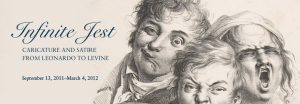1. A truly Courtauld exhibition
The Courtauld Gallery in London, part of the Institute of the same name, is renowned for its carefully curated exhibitions. Since they tend to focus in areas of art history relatively unexplored, they normally offer an element of surprise. This is exactly the case for “The Spanish Line: Drawings from Ribera to Picasso” (from 13 October to 15 January 2012), devoted to the Spanish drawings’ collection in the Gallery, which shows some works never exhibited before. The exhibition celebrates the publication of a catalogue of this collection by Dr. Zahira Véliz (“Spanish Drawings at the Courtauld Gallery: A Complete Catalogue”, 368 pages, £80 at the publisher’s website).
2. More on Spanish lines.
Also regarding to Spanish drawings, I come across to the catalogue of selected drawings at the Museu Belles Arts de València, by curator Dr. Adela Espinós (“Líneas Maestras: Dibujos del Museo de Bellas Artes de Valencia”, 211 pages, €20 at the publisher’s website). You will find a short presentation of the catalogue in this video.
3. The Princess, The Master and The Scholar.
In a fascinating interview by Andrew M. Goldstein, published in the ARTINFO website, Leonardo Da Vinci’s specialist Martin Kemp puts forward his case for attributing the “La Bella Principessa” to the master himself. The work is painted on vellum, and he claims to have identified the book from which it had been cut out at some in the past – a lead that also revealed the princess true identity. Christie’s sold it in 1998 as a German 19th century revival, and for that reason it is currently sued by the consignor.
4. A Medieval bargain
Last September, Koller of Zurich sold this panel featuring Saint Andrew (tempera and gold ground on panel, 125 x 76 cm), attributed to the Catalan Jaume Ferrer (active in late 14th and early 15th centuries), for CHF 25,000 – even less than its CHF 35,000 low estimate, which was already attractive. Although the style and the corpus of Ferrer is not established yet and therefore the attribution can vary, the quality of the work makes it an excellent finding.
5. And a Medieval feast: Sam Fogg at Richard Feigen.
I just received the email announcing the opening, next 4 November, of “Late Medieval Panel Paintings”, an exhibition by London- based specialist dealer Sam Fogg at Richard Feigen premises in New York. Although numbers might be somehow higher that those of the previous note, do not miss the opportunity to attend if you have it: the website preview speaks for a museum quality show.
6. Reweaving European history.
The National Gallery in Washington is the first stop of the American tour of a singular piece of late Medieval art: the four tapestries of the conquest of Asilah and Tangier by Alfonso V (1432-1481), King of Portugal (“The Invention of Glory: Afonso V and the Pastrana Tapestries”, up to January 8th, 2012). Originally woven in Tournai (nowadays Belgium) at the end of the 15th century, they finally find their way to the Collegiate Church of Our Lady of the Assumption in Pastrana, a village 50 miles east from Madrid. Its years long conservation has taken them all the way back, being carried out in the Royal Manufacturers De Wit in Mechlin (also Belgium), with support coming from Portuguese, Spanish and Dutch public and private institutions. The project received one of the European Union Prize for Cultural Heritage/Europa Nostra Awards 2011 in the Conservation category. A catalogue for the exhibition is avalaibe in the National Gallery shop (Various Authors, “The Invention of Glory: Alfonso V and the Pastrana Tapestries”, 102 pages, $75).
7. Budget cuts? Put a smile on your face.
From 13 September 2011 to 4 March 2012, “Infinite Jest: Caricature and Satire from Leonardo to Levine” is on show at the Metropolitan Museum of Art, New York. Featuring works mainly from the Met’s collections, and dealing with a subject seen as “minor” and for which it will be difficult to justify international loans, it makes perfect sense in these times of budget limitations. The exhibition’s website features a video presentation – more instructive than amusing, one can say.





